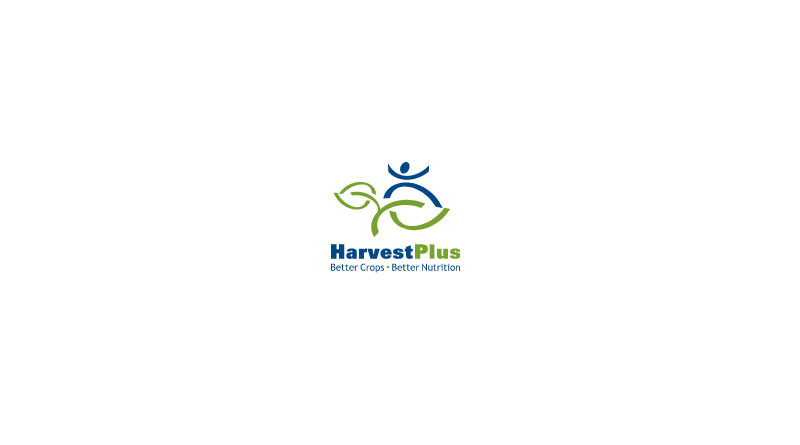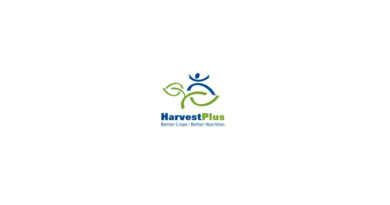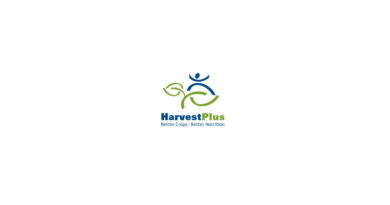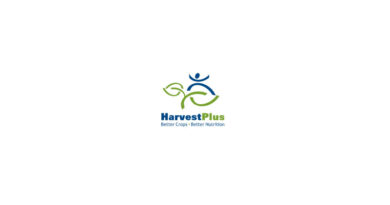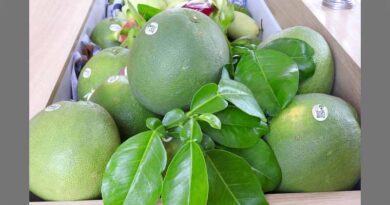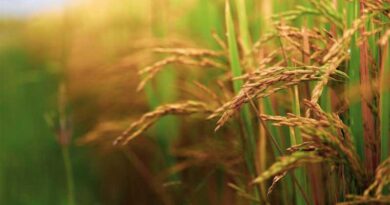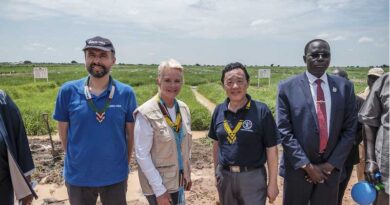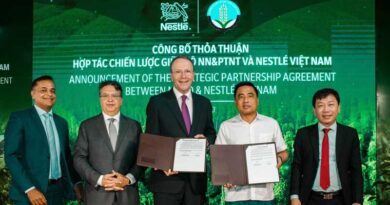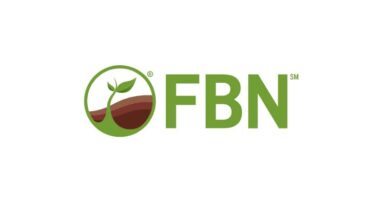HarvestPlus in Uganda: 16 Years of Innovation to Improve Nutrition and Health
02 June 2021, Uganda: Peter Omondi is a member of the Koro-Bobi Sweet Potato Association in Gulu, Northern Uganda. The members grow biofortified vitamin A orange sweet potato (OSP) for sale in local markets and outside the country. Peter provides OSP vines to the group, and everyone grows sweet potatoes in their own gardens. Peter plays a critical role as a village agent at the center of the input and output markets; he is the source of vines and does the bulking for collective marketing of the roots.
Also Read: World environment day celebrated at PAU
Nakyanzi Ruth owns a small seed and farm supply store in Masaka district, Central Uganda. She is also an active member of the local Kyazanga Farmers’ Cooperative. During a meeting in 2019, she heard about the nutritional benefits of beans bred for higher iron content. Following training by HarvestPlus, she eagerly sought more information about the biofortified beans and she eventually became a regional champion promoting and supplying iron beans to the farming community.
Nakyanzi and Peter are among thousands of Ugandans working in agriculture and food value chains who have been trained, empowered, and supported since 2006 to deliver better nutrition to the country’s smallholder farmers and other nutrition-vulnerable groups through biofortified crops and foods.
Since 2006, this life-improving work has mainly been supported by the United States Agency for International Development (USAID) under the United States Feed the Future Initiative, through two successive projects: the current USAID Meals for Nutrition Biofortified Solutions in Uganda (MENU) and the previous USAID Developing and Delivering Biofortified Crops (DDBC) project. HarvestPlus has led biofortification activities under these projects, in collaboration with several other project partners including World Vision, Caritas Hoima, Samaritans Purse, VEDCO, Africa 2000 Network, Healthy Child Uganda, and Community Enterprises Development Organization.
To date, five iron bean varieties and six vitamin A OSP varieties have been released through these projects to farmers in Uganda through this work. By the end of 2020, more than 1.1 smallholder farming households—comprising 5.5 million people, or nearly 12 percent of Uganda’s population—were growing and eating these OSP varieties, while 810,000 households (over 4 million people) were growing iron beans.
Catalyzing a Biofortified Food System
The vitamin A OSP varieties were developed in partnership with the International Potato Center (CIP) and Uganda’s National Agricultural Research Organization (NARO), while the varieties of iron-biofortified beans were developed with NARO and the Alliance of Bioversity International and CIAT. All varieties were developed through conventional (non-GMO) breeding. Apart from their nutritional benefits, these OSP and iron bean varieties are also bred to be early-maturing and high-yielding, while some varieties are also drought tolerant—all are traits valued by farmers and essential to drive uptake.
In addition to empowering Ugandan smallholder farmers to grow biofortified crops, the projects have also helped link farmers to crop aggregators, food processors, retailers, and others in the food value chain to catalyze downstream markets for surplus crop that farmers sell for income to improve their livelihoods.

One notable result of this value chain development work is a wide range of food products made with biofortified ingredients that are now available in Uganda; these products also extend the nutritional benefits of biofortification to non-farm consumers. For example, Nutreal (U) Ltd produces iron bean flour for sauce; the Maama Care Foundation produces healthy snacks by using vitamin A OSP and iron beans as ingredients; SESACO produces composite instant porridge with both biofortified crops, while Namugongo Millers produces OSP composite flours.
“HarvestPlus has been a long-time partner to the NARO and has done tremendous work in getting biofortified crops into the hands of farmers and consumers. It has supported several interventions along the value chain from breeding to dissemination of released varieties to farmers and supporting processors and retailers to include the crops in their product lines and points of sale,” said Godfrey Asea, Director of NARO’s National Crops Resources Research Institute.
“I believe that as the popularity of biofortified crops increases, they will be targeted for every nutrition-sensitive agricultural program, with the twin goal of achieving food and nutrition security,” Asea added.
Improving Health Through Staples
The micronutrients in these biofortified crops and foods, essential for maintaining good health, are lacking in the diets of millions of Ugandans—particularly members of smallholder farming families and other low-resource groups who rely on relatively cheaper but lower-nutrient staples. They can’t afford nutritionally diverse diets and aren’t reached by industrial food fortification or supplementation.
These vulnerable individuals often suffer from micronutrient deficiency or “hidden hunger,” which can lead to anemia, stunting, blindness, and other serious ailments that are preventing many Ugandans from leading healthy, productive lives. The impact of hidden hunger starts in childhood, leading to lifelong health problems.
About 10 percent of children in Uganda are vitamin-A deficient, which can lead to night blindness and a higher risk of infections; vitamin A deficiency can also impair fetal development. Meanwhile, according to the 2016 Uganda Demographic and Health Survey, 50 percent of Uganda’s children are anemic, which is often caused by a lack of iron in the diet.
Biofortified crops can address hidden hunger. Research has shown that regular consumption of iron beans can provide up to 80 percent of daily iron needs, while regular consumption of vitamin A OSP can provide up to 100 percent of daily vitamin A needs. Studies also show that vitamin A OSP significantly improved vitamin A status among children and provided health outcomes such as reduced prevalence and duration of diarrhea in children. Meanwhile, consumption of iron beans not only reduces iron deficiency but also improves cognitive performance and physical functions. Research with farmers and consumers also shows that they like the taste, agronomic and cooking attributes of biofortified crops and foods.
Innovating to Catalyze Scale Up
Success in reaching so many Ugandans has hinged on continuous innovation, made possible under the USAID-funded DDBC and MENU projects. As part of this, HarvestPlus promoted several novel approaches to scaling up the reach and impact of biofortified crops in Uganda, and many of these innovations have been duplicated in other countries. Here are a few examples:
Supply of Clean Planting Material: During the USAID DDBC project, a system was initiated to ensure the development and provision to farmers of virus-free (clean) vitamin A OSP planting material, in response to widespread issues with vine viruses that lowered yields, reduced adoption, and deterred farmer purchases.
Partnerships were developed with private laboratories in Uganda—Biocrops (U) Ltd and Senai Biosciences—to generate clean planting materials. In collaboration with Uganda’s Makerere University, CIP, and NARO, inspection protocols were developed, government extension system staff were trained, and they took on inspection of the materials. In collaboration with the Ministry of Agriculture, Animal Industry and Fisheries ( MAAIF), the capacity of vine multipliers was strengthened to produce clean, certified vines at scale, and these efforts have enabled the multipliers to produce vines for other programs, including the Uganda Multisectoral Food Security and Nutrition Project. HarvestPlus also established vine entrepreneur associations and strengthened their capacity in clean vine production for farmers; these associations have also become part of larger root producer associations that produce roots for larger markets, including export markets.
This system generated new business opportunities and boosted the competitiveness of the labs and vine multipliers; today, the clean vine business is recognized by the government as a viable sector included in official inspection and certification systems. This successful “clean materials” approach has also been applied to other crops, including white sweet potato varieties in Uganda, and has been replicated in other countries.
Crop Payback and Pay Forward Systems: To make it easier to reach more farmers and build up seed supplies, a system was adopted whereby some farmers receiving seeds would agree to pay for them by giving back to the partners twice as much seed after harvest. This enabled the activities to reach nearly three times the number of farmers, especially with OSP vines. The payback approach helped the project engage some of the poorest farmers, who would normally not be able to pay for seed or vines upfront. This model, introduced in Uganda, was later applied in other countries and contributed to the engagement of millions more smallholder farming families.
Leveraging Farmer-Friendly Technology: A mobile phone is one of the few technologies that many smallholder farmers possess. With USAID support, HarvestPlus, in collaboration with the Makerere University-Bioinnovative Africa Project and the MAAIF, has contributed to the development phase of a mobile application that vine multipliers will be able to use to communicate with government inspectors to get their vines inspected and certified. Farmers will also be able to use the app to find sources of certified OSP vines, while OSP purchasers can locate producers of OSP that use certified vines. Once it is launched, the mobile app will help facilitate the growth of the OSP value chain by better linking vine suppliers, producers, and buyers.
Using Media to Engage Farmers: Raising awareness about nutrition and biofortification among farming families is critical to scaling up interest in growing these crops. Radio programming is one of the most powerful conduits for reaching rural households in Uganda; so with USAID support, HarvestPlus joined forces with Farm Radio International to produce the popular My Children serial drama, which ran from 2014-2016, and reached far more than the 350,000 households targeted. My Children comprised 55 episodes, broadcasted by 10 radio stations, that interspersed typical serial drama content with messages about the health benefits of OSP. It generated strong demand for OSP and significantly increased the vine multipliers’ sales. Radio remains an important way of reaching both farmers and consumers. Every year, seven FM radio stations broadcasting in project implementation areas run messages in various local languages to explain the nutritional value of biofortified crops.
Empowering Women: The Lead Mother Initiative recognizes the critical role of women in ensuring nutritional improvement for all. By the end of 2019, through the USAID MENU project, HarvestPlus had trained and supported 970 women champions for enhanced nutrition and health for their own and other families as part of the Lead Mother Initiative. They learned about the nutrition and health benefits of biofortified crops and about common nutrition and other misconceptions. Lead mothers support other mothers in their communities through training and counseling and addressing barriers to providing nutritious diets resulting in increased consumption of biofortified crops.
Reaching Marginalized Communities: These biofortification efforts strive to reach the most vulnerable population segments in its program countries, including people who have been displaced by civil unrest or environmental factors. In Uganda, under the USAID/MENU project, HarvestPlus has collaborated with Send a Cow to reach 1000 disabled women and girls with OSP vines, and with Self Help Africa to improve nutrition and income for refugees, through production, consumption, and marketing of vitamin A OSP and iron beans.
Skills-building for Women and Youth Groups: Through USAID/MENU, HarvestPlus has been involved in training women and youth groups in crop value addition to enable these groups to start small income-generating activities and improve their livelihoods. Part of this work has involved supporting the establishment of associations such as the Twimukye Association to empower youth and women with tools and knowledge on farming techniques and the nutritious benefits of biofortified crops. Over 100 women and youth groups in Uganda have been empowered in this way , with more being added in 2020.
Advancing a Strong Commitment from Government
Thanks in large part to collaborative advocacy work over several years, a strong government commitment to biofortification has developed—essential to catalyzing the proper enabling environment for scaling up. In a reflection of this, H.E. President Yoweri Museveni Kaguta presided over the official release of new iron bean varieties in 2017; his government has recognized biofortification as one of the sustainable strategies to combat hidden hunger.
Since 2010, HarvestPlus has been part of technical working groups that periodically review national plans and strategies and offer recommendations. Through sharing nutrition evidence of the impact of biofortified crops, advocacy efforts led to the successful inclusion of clauses promoting biofortified crops in the Uganda Nutrition Action Plan I (UNAP I) 2011-2016, the National Anemia Strategic Plan (2011-2016), the Agriculture Sector Strategic Plan (2014-2019), and the Nutrition Action Plan (UNAP II) 2019-2025. In 2019, under the USAID MENU project, HarvestPlus and the MAAIF co-established and facilitated the convening of the National Biofortification Technical Working Group to advocate the adoption and scale-up of biofortification. Today several government and NGO programs promote biofortified crops.
In addition, as part of the Uganda Multisectoral Food Security and Nutrition program coordinated by the MAAIF, biofortified crops are currently distributed in 1500 Ugandan schools. HarvestPlus under the USAID MENU project linked this program to the vine multipliers and was part of the team that developed their training manual. Under the Agriculture Cluster Development Program, iron beans are included in subsidy programs in some districts of Uganda.
The Path Forward
The past 15 years of dedicated efforts of HarvestPlus and its partners in Uganda have achieved significant returns for Ugandans like Nakyanzi and Peter, their families, and their communities. To continue reaching all vulnerable populations through the current USAID/MENU project, and building on the strong commitment from the government, we are now focusing on expanding private sector engagement across seed and food value chains to further scale up biofortification on a sustainable basis.
The objective is to embed biofortification in the Ugandan food system so that everyone can enjoy the health and livelihood benefits of these crops and foods.
For more information about the work of HarvestPlus under the USAID MENU project in Uganda, contact:
Sylvia Magezi, HarvestPlus Uganda Country Manager

